On the evening of October 6th 2018, Robin Shoemaker’s salon was full to capacity. We had come to see pianist Zhenni Li perform both as a soloist and in collaboration with Matthew Cohen (viola),
The program started and ended with works by Beethoven and Mussorgsky. An interesting mix of early 20th century pieces fleshed out the middle.
We were not familiar with some of these works, but Ms. Li introduced each item to us.
Beethoven: 32 Variations in C minor
This work is quintessential Beethoven, vigorous and lean. While Beethoven purportedly was unhappy with the result, Zhenn Li’s rendition was strong and satisfying.
Debussy: Poissons d’Or
Debussy’s short work is playful and at the same time beautiful. In Ms. Li’s nimble hands it was a delightful contrast to the solemnity of Beethoven’s variations.
Edwin York Bowen: Phantasy for Viola and Piano, Op. 54
For York Bowen, Ms. Li partnered with Matthew Cohen (viola). While the work is not so well-known, there are a number of performances on YouTube including one by Mr Cohen himself, working with pianist Vivian Fan: Bowen Phantasy.
If Mussorgsky’s Picture at an Exhibition is a set of imposing oil paintings, York Bowen’s Phantasy is a pastoral water-color.
At times the composer gets lost in his English meadows. But he also manages a sublime lyricism that allowed Matthew Cohen’s potent vibrato to sing. And as Ms. Li noted, there were echoes of Rachmaninov near the end.
Albéniz: Navarra
One of Albeniz’ pupils finished this work after Albeniz passed away. Before playing it, Zhenni Li challenged us to identify point where the student took over. Then she played this lively and very Spanish music with passion, at times throwing her head back as if transported.
The late Alicia de Larrocha gave a legendary performance of this work in 1968.
Arthur Lourié: Préludes Fragiles Op.1, No. 4
This impressionistic prelude was one of a suite of 5 written early in the 20th century by Russian composer Arthur Lourié. Although written long before Lourié moved to France, it sounds somewhat French to your reviewer. You can view Zhenni’s recording of it at Arthur Lourié: Prélude #4 from Cinq Préludes Fragile, Op. 1 – Zhenni Li, Piano.
Mussorgsky: Pictures at an Exhibition
To enhance our appreciation, host Robin provided a slide show containing paintings and other visuals for each section of Mussorgsky’s work. While the piece is best known in Ravel’s orchestration, Mussorgsky’s original piano version has become more popular lately. While some may find the work ponderous, Zhenni Li’s interpretation used iridescent harmonics to add magic to this magnificent work.
Encore: Piazzola’s Oblivion
At the close of the recital. Zhenni Li announced a surprise guest and a special encore.
Violinist Bela Horvath then joined with Zhenni and Matthew to play Piazzola‘s 1982 tango Oblivion.
Some consider this work to be among the most beautiful music ever written. The performance was rapturous, and drew cheers from the audience.
It’s not just the performers
It’s neat to meet musicians who perform at Mr. Shoemaker’s concerts. But the salon experience is not just about watching people play and meeting them afterwards. It’s also about the program.
Often, there is music that we are not familiar with. At Zhenni Li’s recital, I discovered Astor Piazzola, the Argentine composer who wrote Oblivion. Piazzola is known for revitalizing the tango by adding jazz and other elements to form nuevo tango. This led me order a CD of his 1987 Central Park Concert.
Thank you Robin, Zhenni and partners, for broadening our musical horizons.
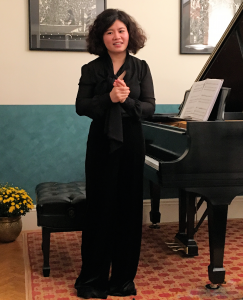
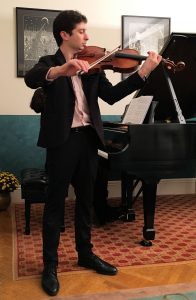
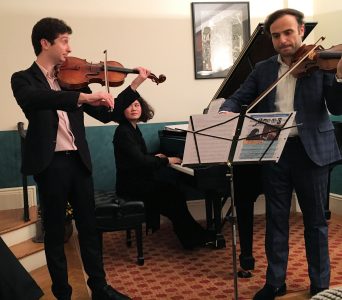
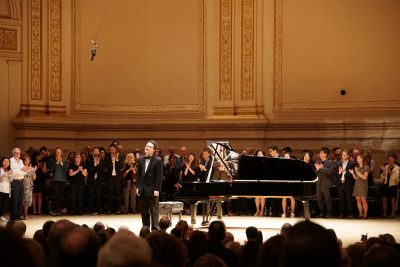
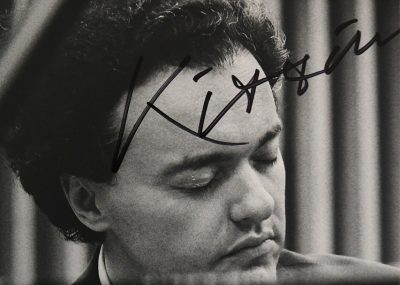
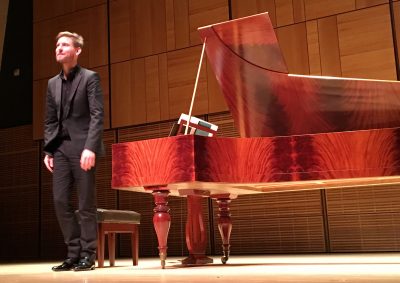
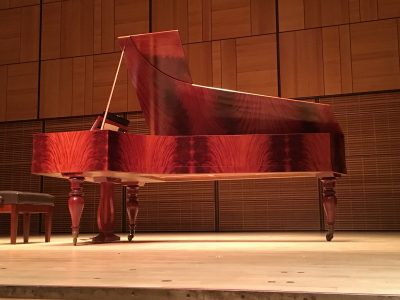
You must be logged in to post a comment.